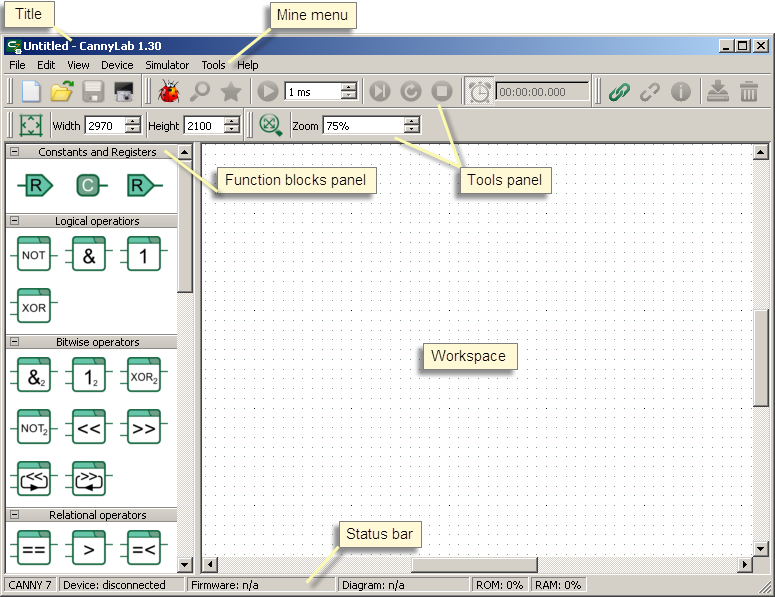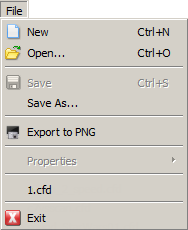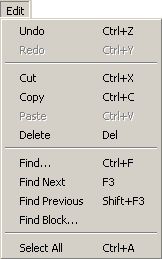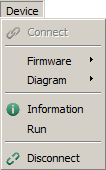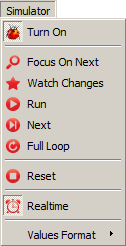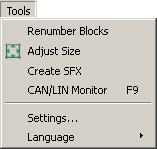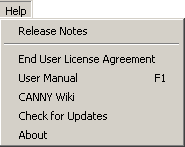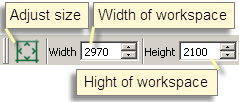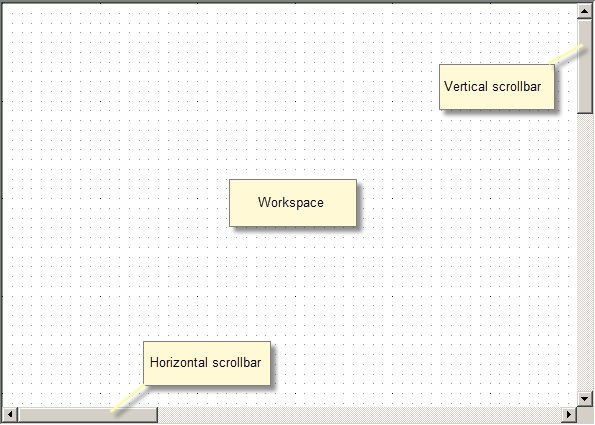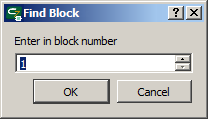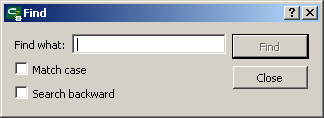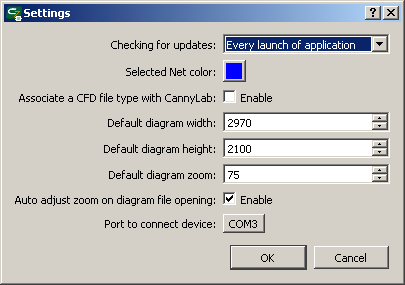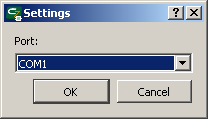| This documentation is out of date.
The new version of the documentation is here: https://cannylogic.com/docs |
Difference between revisions of "CANNY Lab Main window"
(cialis for daily use cost) |
(Undo revision 1903 by 46.161.11.4 (talk)) |
||
| Line 287: | Line 287: | ||
|} | |} | ||
| − | + | === Keyboard shortcuts === | |
| + | {| | ||
| + | |- valign="top" | ||
| + | |width="200px"|F1 | ||
| + | |Open Reference Manual; | ||
| + | |- valign="top" | ||
| + | |Ctrl+N | ||
| + | |Create a new function diagram file; | ||
| + | |- valign="top" | ||
| + | |Ctrl+O | ||
| + | |Open an existing diagram file; | ||
| + | |- valign="top" | ||
| + | |Ctrl+S | ||
| + | |Save the function diagram file; | ||
| + | |- valign="top" | ||
| + | |Ctrl+A | ||
| + | |Select all; | ||
| + | |- valign="top" | ||
| + | |Ctrl+Z | ||
| + | |Undo the last action while working on the diagram; | ||
| + | |- valign="top" | ||
| + | |Ctrl+Y | ||
| + | |Redo the last undone action while working on the diagram; | ||
| + | |- valign="top" | ||
| + | |Del | ||
| + | |Delete selected diagram elements; | ||
| + | |- valign="top" | ||
| + | |Esc | ||
| + | |Exit network editing mode; | ||
| + | |- valign="top" | ||
| + | |Left, Up, Right, Down | ||
| + | |Shift workspace display area Left, Up, Right, Down; | ||
| + | |- valign="top" | ||
| + | |PageUp, PageDown | ||
| + | |Shift workspace display area one page up, down; | ||
| + | |- valign="top" | ||
| + | |Ctrl + mouse wheel | ||
| + | |Fast workspace zoom; | ||
| + | |- valign="top" | ||
| + | |Alt + mouse wheel | ||
| + | |Horizontal scrolling within the workspace; | ||
| + | |- valign="top" | ||
| + | |Shift + mouse wheel | ||
| + | |Fast vertical scrolling within the workspace; | ||
| + | |- valign="top" | ||
| + | |Hold mouse wheel + move the mouse | ||
| + | |Move the diagram field within the workspace ("drag and drop"). | ||
| + | |- valign="top" | ||
| + | |Double-click the left mouse button | ||
| + | |In editor mode: on a network – open the rename network dialog; on a register – open the register editor dialog; on a constant – open the constant editor dialog with the last used option selected by default. In simulator mode: on a network – set/remove control point; on a function block – set/remove the breakpoint. | ||
| + | |- valign="top" | ||
| + | |Ctrl + double-click the left mouse button | ||
| + | |In editor mode: on a constant – open the alternative constant editor dialog. In simulator mode: on a network – forcibly set the network value to "1"/remove the previously set value. | ||
| + | |} | ||
Revision as of 17:41, 11 July 2022
CannyLab user interface consists of a single window - the main program window.
Contents
Main window
The main window is divided into several areas:
- window title;
- main menu;
- toolbar;
- function block panel;
- workspace;
- status bar.
Depending on the current operating mode of the editor, some of CannyLab menu items and panels may not be available or hidden.
Menu "File" contains commands for working with CannyLab files.
Menu "Edit" contains the basic editing commands for working with the function diagram editor.
Menu "View" contains options for customizing the appearance of the toolbar, the function block panel, as well as an option for scaling the workspace.

|
|
| - scale the workspace by the contents of the diagram; | |
| - toolbar appearance settings; | |
| - function block panel appearance settings. |
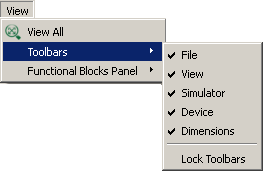
|
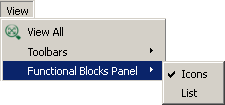
|
Menu "Device" contains commands for working with the controller.
| - upload firmware to the controller; | |
| - erase controller firmware; | |
| - upload the user's function diagram to the controller; | |
| - erase the user's function diagram from the controller. |
Menu "Simulation" contains controls for the controller software emulation mode in the CannyLab environment.

|
- use the decimal number system; |
| - use the hexadecimal system; | |
| - use the binary system; | |
| - use character data mapping. |
Menu "Service" contains service commands and CannyLab settings.
Menu "Help" provides links to this guide and information about the program.
Toolbars
Toolbars allow access to the most used commands in CannyLab.
Desktop Control Panel allows scaling the area of the workspace and changing its dimensions in pixels. To quickly zoom in/out, rotate the mouse wheel while holding down the «Ctrl» button on your keyboard.
Workspace
The workspace is designed to display, edit, and debug function diagrams. The background of the workspace is a grid that facilitates positioning of function diagram elements. To move around the diagram displayed in the workspace, use the vertical and horizontal scroll bars, mouse wheel or arrow keys.
Status bar
The status bar displays: the controller for which the current function diagram is designed, the status of communication with the controller, the presence of system software and function diagram in the connected controller. In the simulator mode the status bar displays information about controller resources used by the user diagram.
Function block panel
Function block panel contains all block types available for constructing the function diagram. Function blocks in this panel are grouped by their purpose and, depending on display setting, may be presented as either icons or a list. Scroll the function block panel by using the vertical scroll bar or your mouse wheel.
The two ways of displaying the function block panel:
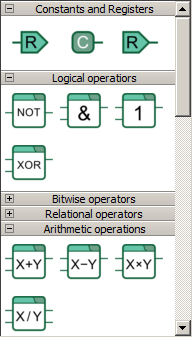
|
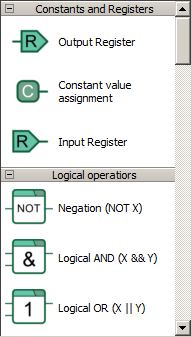
|
Function block by ordinal number search dialog
Access the dialog for searching function blocks by their ordinal number by selecting "Edit" → "Find block" in the CannyLab main menu.
Text search dialog
Access the dialog that allows searching by the specified text fragment by choosing "Edit" → "Find..." in the main menu of the program or by using the "Ctrl + F" key combination.
If you’ve already used text search in the current session, you can continue searching for the currently entered text fragment by choosing "Edit" → "Find next"/pressing “F3” to find the next occurrence or by choosing "Edit" → "Find previous"/pressing “Shift+F3” to find the previous occurrence.
Settings dialog
Access the CannyLab configuration dialog by selecting "Tools" → "Settings" in main menu.
Keyboard shortcuts
| F1 | Open Reference Manual; |
| Ctrl+N | Create a new function diagram file; |
| Ctrl+O | Open an existing diagram file; |
| Ctrl+S | Save the function diagram file; |
| Ctrl+A | Select all; |
| Ctrl+Z | Undo the last action while working on the diagram; |
| Ctrl+Y | Redo the last undone action while working on the diagram; |
| Del | Delete selected diagram elements; |
| Esc | Exit network editing mode; |
| Left, Up, Right, Down | Shift workspace display area Left, Up, Right, Down; |
| PageUp, PageDown | Shift workspace display area one page up, down; |
| Ctrl + mouse wheel | Fast workspace zoom; |
| Alt + mouse wheel | Horizontal scrolling within the workspace; |
| Shift + mouse wheel | Fast vertical scrolling within the workspace; |
| Hold mouse wheel + move the mouse | Move the diagram field within the workspace ("drag and drop"). |
| Double-click the left mouse button | In editor mode: on a network – open the rename network dialog; on a register – open the register editor dialog; on a constant – open the constant editor dialog with the last used option selected by default. In simulator mode: on a network – set/remove control point; on a function block – set/remove the breakpoint. |
| Ctrl + double-click the left mouse button | In editor mode: on a constant – open the alternative constant editor dialog. In simulator mode: on a network – forcibly set the network value to "1"/remove the previously set value. |
